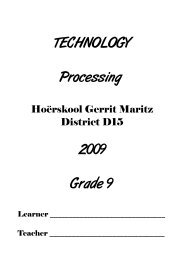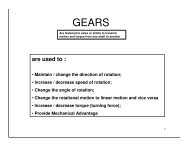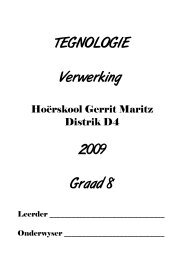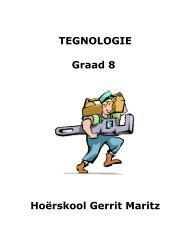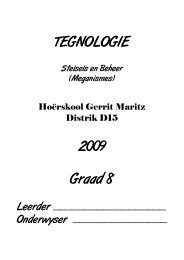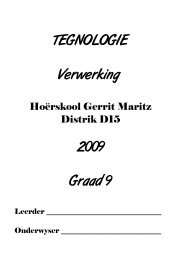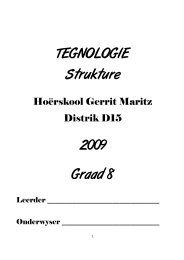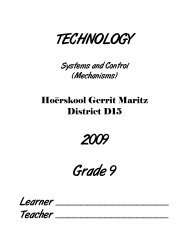TECHNOLOGY Processing 2009 Grade 8 - Tegnologie
TECHNOLOGY Processing 2009 Grade 8 - Tegnologie
TECHNOLOGY Processing 2009 Grade 8 - Tegnologie
Create successful ePaper yourself
Turn your PDF publications into a flip-book with our unique Google optimized e-Paper software.
wool<br />
Stainless steel<br />
fibre glass<br />
Aspect<br />
Resource Task 1<br />
Level 7<br />
(Mastered<br />
excellently)<br />
Assignments<br />
completed and<br />
correct. Obvious<br />
effort.<br />
Properties of materials<br />
Level 6<br />
(Meritoriously<br />
mastered )<br />
Level 5<br />
(Substantially<br />
mastered)<br />
Assignments<br />
completed and<br />
correct. Some<br />
effort.<br />
Assessment<br />
Level 4<br />
(Adequately<br />
mastered)<br />
Level 3<br />
(Moderately<br />
mastered)<br />
Assignments<br />
completed<br />
haphazardly.<br />
Hardly any effort.<br />
Level 2 (Elementary<br />
mastered)<br />
Level 1<br />
(Not mastered)<br />
Assignments incomplete.<br />
No effort.<br />
One of the most important questions that should be asked, before a product can be made, is<br />
what material will be used. Materials are chosen based on their properties and the purpose<br />
for which the product will be used. You would, for example not use paper to make an<br />
umbrella, since an umbrella must be water resistant..<br />
• Stiffness: how little distortion or deflection occurs when placed under pressure<br />
• Hardness: Ability to withstand being scratched cut or dented<br />
• Brittleness: When material fractures with little or no deformation<br />
• Toughness: Resistance to impact<br />
• Ductility: Allows a material to be elongated or stretched without breaking<br />
• Elasticity: can be stretched out of shape, but will return to original shape.<br />
• Flexibility: If a material bends easily and does not crack.<br />
• Plasticity: After pressing or squashing a material the shape changes permanently.<br />
• Absorbent: Materials that suck up water easily.<br />
• Waterproof: Materials that seems to push water away, it just runs of the material<br />
• Corrosion resistant: resists corrosion (rust) or UV-rays of the sun<br />
• Heat resistan: will not burn or acts an insulator against heat<br />
• Conducts electricity: lets electricity pass through it<br />
• Magnetic: is attracted by a magnet<br />
• Transparant: can see through it<br />
Types of materials<br />
Metals<br />
Ferrous metals contain iron which rust and is magnetic. Examples: steel, iron<br />
Non ferrous metals contain no iron, do not rust and is not magnetic. Examples: zinc,<br />
copper, silver<br />
When two or more metals are mixed it is called an alloy. Metals are alloyed to obtain properties<br />
which are absent from pure metals. Examples of alloys are; brass, a mixture of zinc and<br />
copper, stainless steel is a composition of carbon, chrome, nickel and magnesium. Bronze<br />
consists of copper and tin.<br />
Mark<br />
___<br />
10




